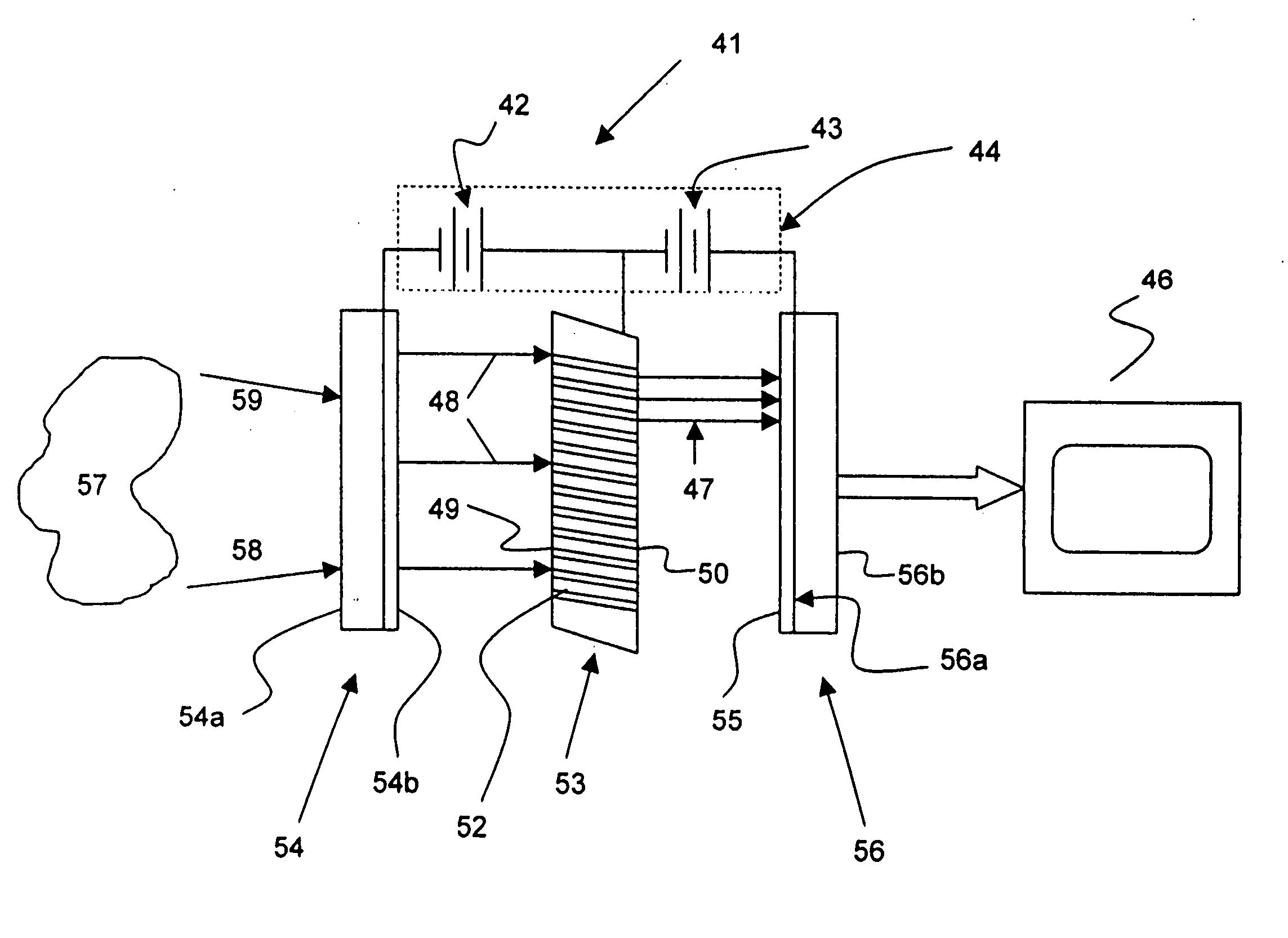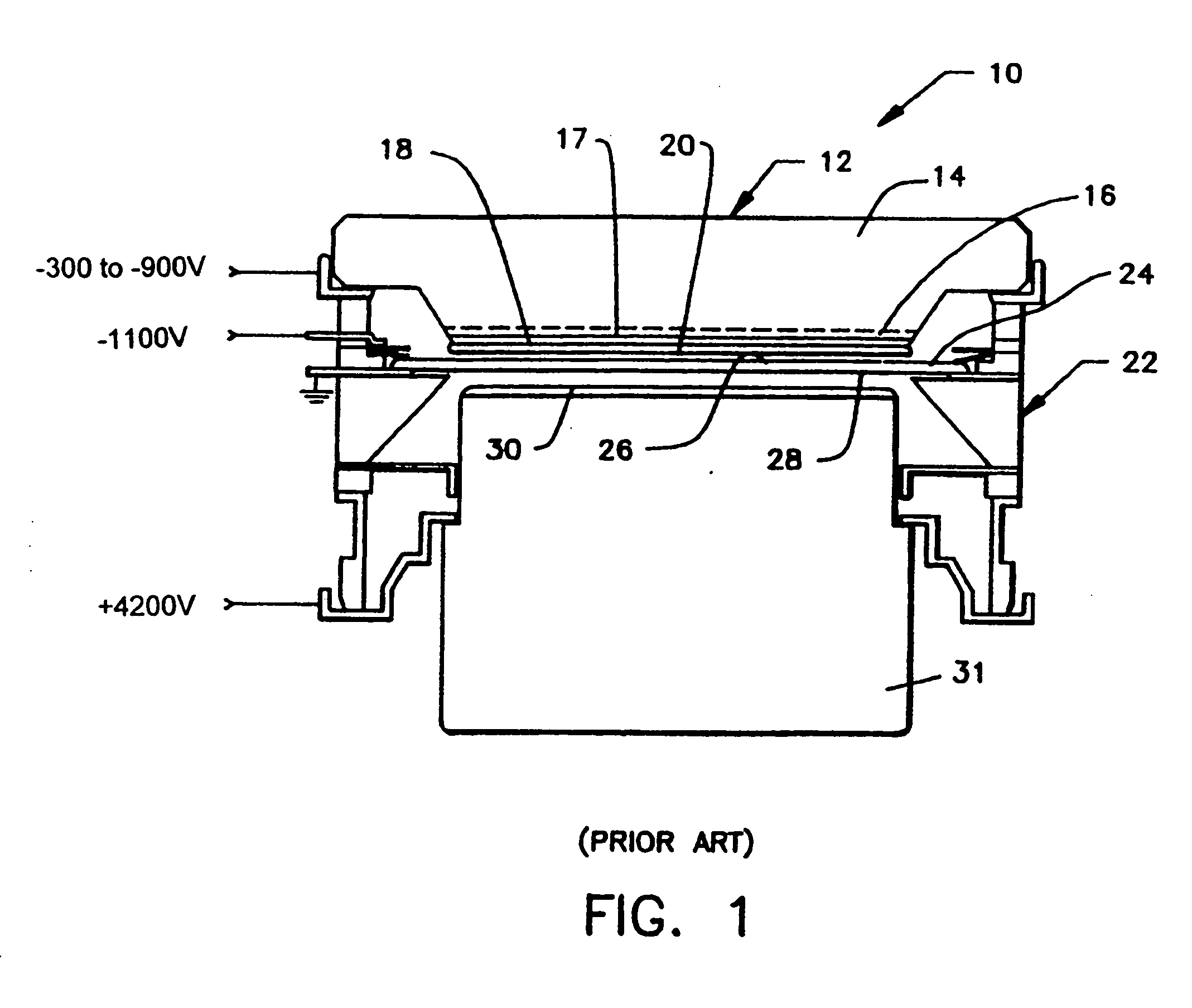Intensified hybrid solid-state sensor
a hybrid solid-state sensor and intensifier technology, applied in the field of intensified hybrid solid-state sensors, can solve the problems of sup>2 /sup>2 /sup>2 /sup>2 /sup>2 /sup>, and the image intensifier/isup>2 /sup>cameras suffer from numerous, object looking fuzzier,
- Summary
- Abstract
- Description
- Claims
- Application Information
AI Technical Summary
Benefits of technology
Problems solved by technology
Method used
Image
Examples
Embodiment Construction
[0041] Preferred features of embodiments of this invention will now be described with reference to the figures. It will be appreciated that the spirit and scope of the invention is not limited to the embodiments selected for illustration. Also, it should be noted that the drawings are not rendered to any particular scale or proportion. It is contemplated that any of the configurations and materials described hereafter can be modified within the scope of this invention.
[0042] In copending U.S. patent application Ser. No. 09 / 973,907, the present invention was described as providing an intensified hybrid solid-state sensor. The solid-state sensor, according to the present invention, includes an imaging device comprising a solid-state sensor assembled with an image intensifier cathode, microchannel plate (MCP), and body envelope. This device combines the best functions of the image intensifier, good signal-to-noise ratio and high logarithmic gain, with the electronic read-out functions...
PUM
 Login to View More
Login to View More Abstract
Description
Claims
Application Information
 Login to View More
Login to View More - R&D
- Intellectual Property
- Life Sciences
- Materials
- Tech Scout
- Unparalleled Data Quality
- Higher Quality Content
- 60% Fewer Hallucinations
Browse by: Latest US Patents, China's latest patents, Technical Efficacy Thesaurus, Application Domain, Technology Topic, Popular Technical Reports.
© 2025 PatSnap. All rights reserved.Legal|Privacy policy|Modern Slavery Act Transparency Statement|Sitemap|About US| Contact US: help@patsnap.com



